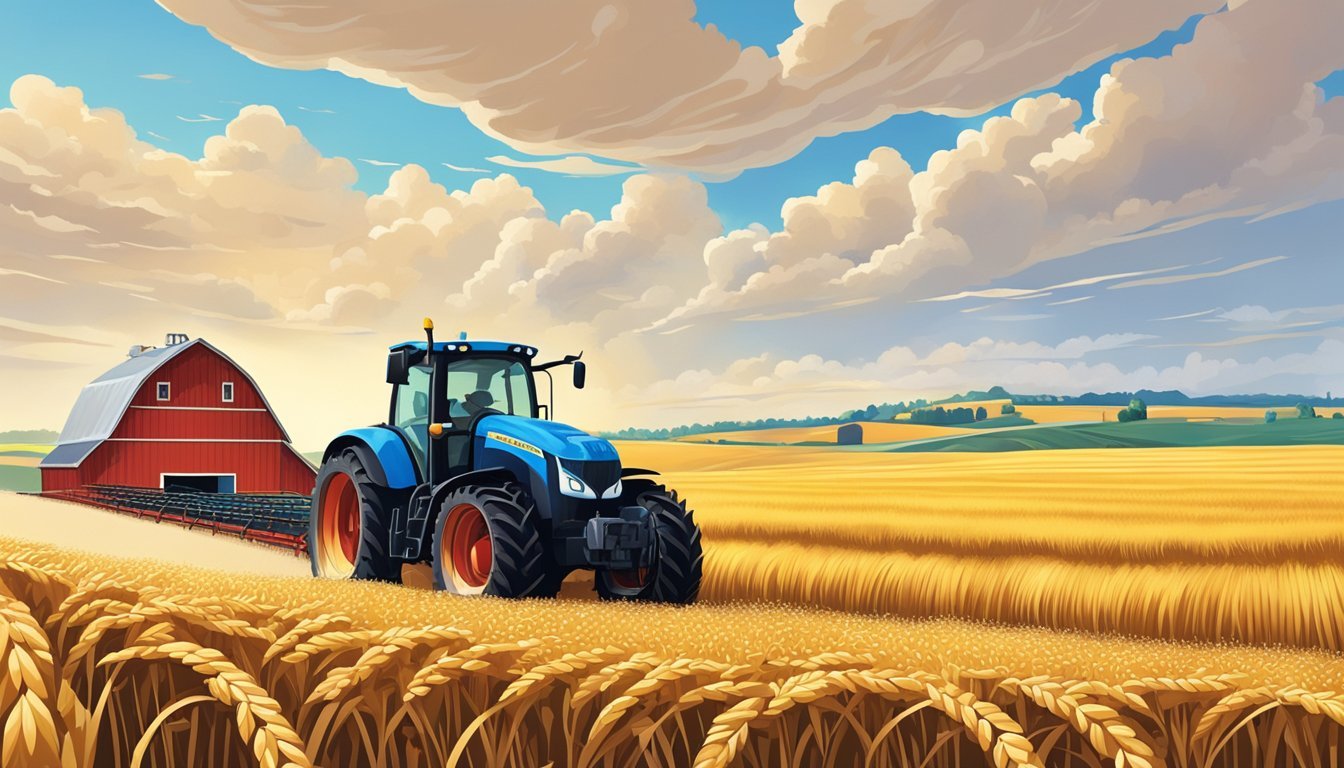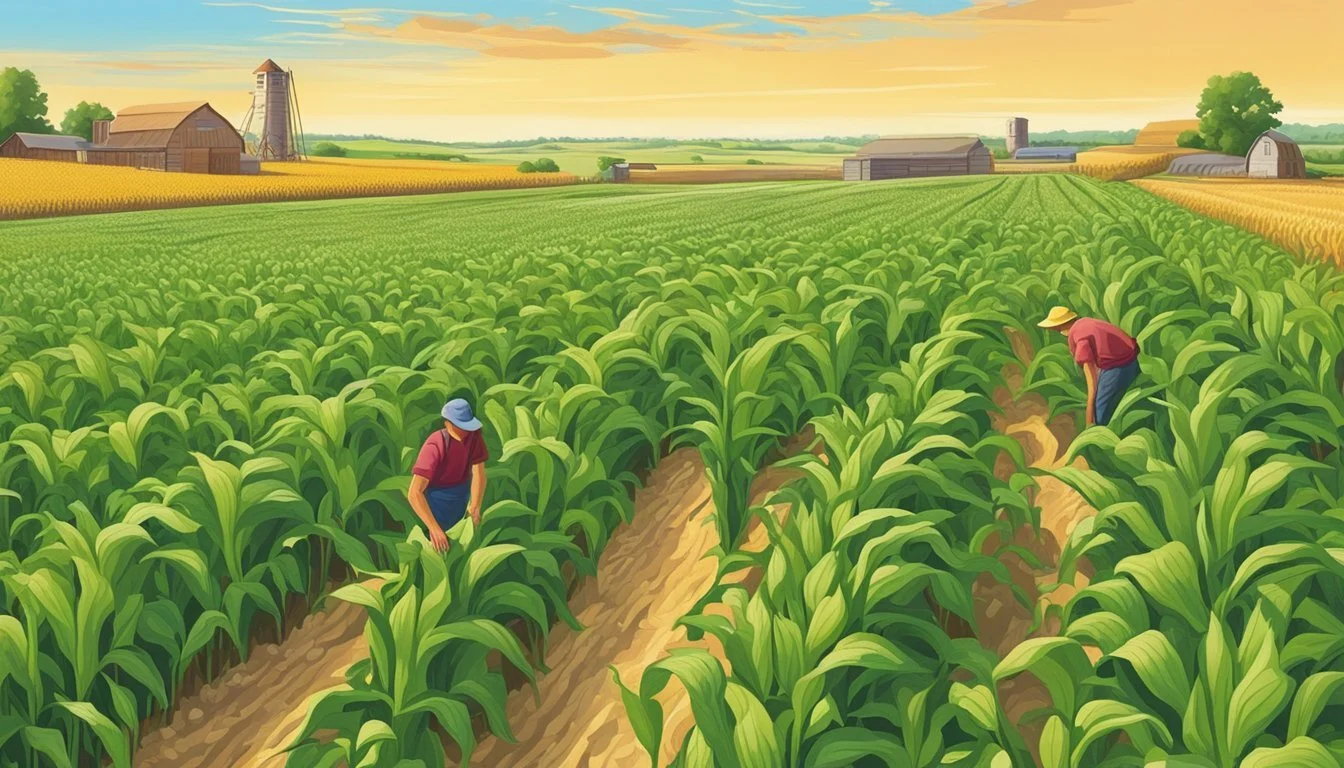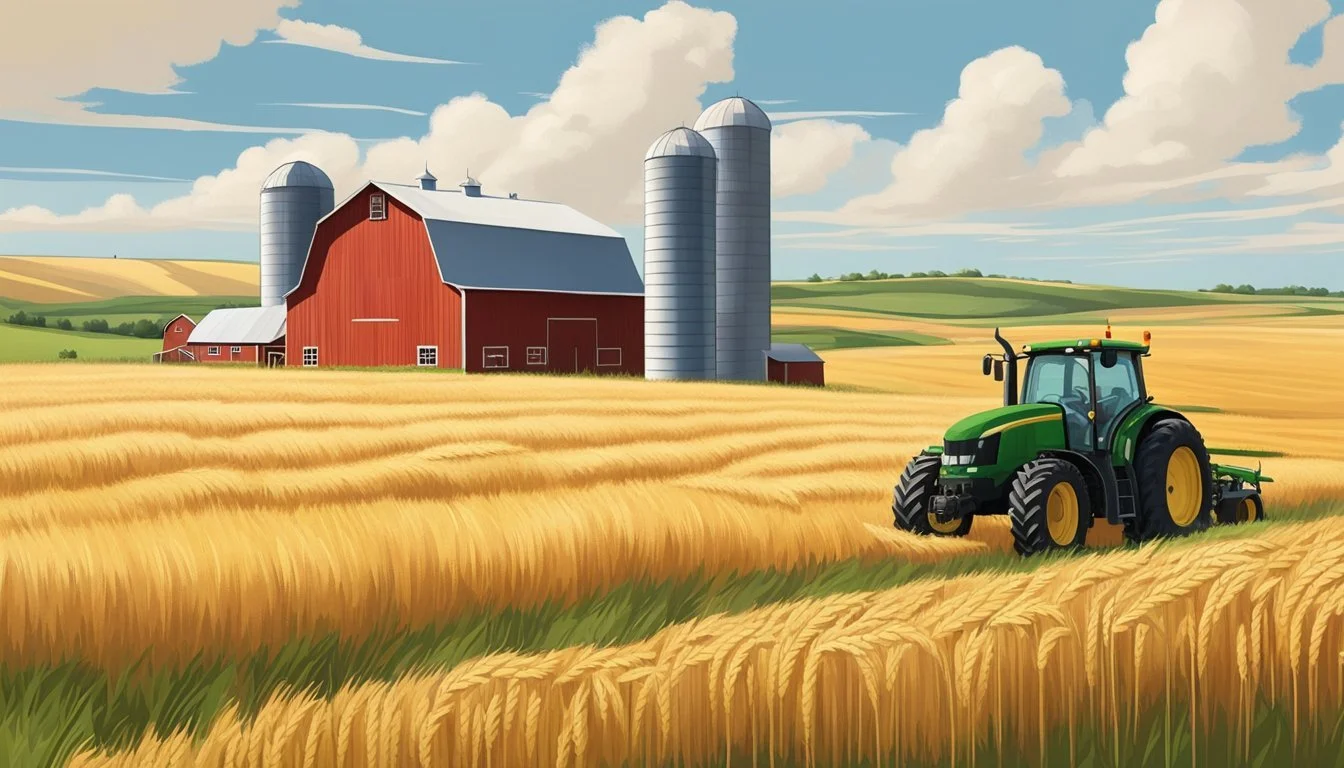Farming Communities in South Dakota
A Comprehensive Overview
The farming communities in South Dakota embody resilience, tradition, and innovation. Nestled across the vast plains and picturesque landscapes, these communities are the backbone of South Dakota's agricultural industry. With over 100,000 acres of farmland and ranches available for sale, South Dakota continues to attract aspiring farmers and seasoned agriculturalists alike. This state offers a variety of properties that range from small family-owned farms to expansive commercial ranches, providing numerous opportunities for those interested in agriculture.
South Dakota's unique combination of fertile soil, favorable climate, and supportive local economies makes it an ideal place for farming. The state is known for its diverse agricultural output, including corn, soybeans, and wheat, as well as livestock such as cattle and sheep. Communities here are closely knit, often brought together by shared agricultural practices and a deep connection to the land.
The Turkey Track Ranch in Perkins County and the Rafter R Ranch in Custer County are excellent examples of South Dakota's rich agricultural heritage. These properties exemplify the blend of tradition and modern efficiency that define farming communities in this state. From family-owned operations to large-scale enterprises, South Dakota's farming communities are thriving hubs of agricultural productivity and rural life.
Historical Context of Agriculture in South Dakota
The agricultural history of South Dakota encompasses the early settlers' attempts to farm the land, subsequent technological advancements, and adaptations to changing economic and environmental conditions. The following sections provide an overview of these significant moments and developments.
Early Farming Practices
Early settlers in South Dakota faced numerous challenges due to the state's harsh weather, including long winters and unpredictable rainfall. Native American agricultural practices, based on extensive knowledge of the environment, influenced initial attempts at farming.
In the late 19th century, homesteaders arrived through government programs, including the Homestead Act. They primarily grew wheat, corn, and oats. Despite poor soil quality and the absence of modern farming equipment, these pioneers laid the foundation for future agricultural success.
Technological Advancements in Farm Management
Technological progress profoundly transformed South Dakota's agricultural landscape. The introduction of tractors and combine harvesters in the early 20th century increased efficiency and productivity. These machines replaced manual labor, enabling farmers to cultivate larger areas.
Irrigation technologies, developed mid-century, addressed inconsistent rainfall. Advances in pesticides and fertilizers further boosted crop yields. The 21st century saw the adoption of GPS and data analytics, optimizing farm management and decision-making.
These innovations paved the way for South Dakota to become a major agricultural state, adapting continuously to meet the demands of modern farming.
Geography and Climate Influence on Farming
South Dakota's diverse landscape and changing climate have significant impacts on agricultural practices. Key factors such as soil composition and weather patterns directly affect farming schedules and crop yields.
Soil Composition and Health
South Dakota features a variety of soil types, from loamy soils in the east to sandy or clay-rich soils in the west. The fertility and health of the soil are critical for crop production. Efforts to maintain soil health include crop rotation, cover cropping, and reduced tillage practices.
No-till farming, in particular, has shown benefits in preserving soil moisture and reducing erosion. Regular soil tests are essential to monitor nutrient levels and ensure that appropriate amendments are applied.
Weather Patterns and Farming Schedules
The climate in South Dakota is characterized by hot summers and cold winters, with significant seasonal variation. Rainfall is sporadic and can be intense, influencing planting and harvesting decisions. Farmers must adapt to these conditions by selecting drought-resistant crop varieties and optimizing irrigation practices.
Severe weather events such as tornadoes and droughts pose risks to crop health. To mitigate these risks, farmers often incorporate weather forecasting tools to adjust farming schedules and protect their investments. Sudden temperature shifts also impact planting and harvesting times, necessitating flexible management strategies.
Economic Impact of Agriculture
Agriculture significantly influences South Dakota's economy, contributing billions of dollars in income and thousands of jobs. The agricultural sector also generates substantial tax revenues and stimulates related industries.
Contribution to State Economy
Agriculture contributes immensely to South Dakota's economy. In 2022, the state generated approximately $14.7 billion in agricultural cash receipts, with key commodities like corn, cattle, and soybeans leading the production value.
The total economic activity linked to agriculture in the state amounted to $21.3 billion. This includes both direct and indirect contributions from farming, processing, and related industries. Additionally, agriculture adds significant value to household incomes, approximating $11.6 billion annually from various agricultural activities.
Job Market and Employment
The agriculture sector plays a vital role in employment within South Dakota. It supports 173,101 jobs, impacting a substantial percentage of the state’s workforce.
These jobs span various roles, from farm operations to processing and distribution, making agriculture a cornerstone of the job market. Moreover, the sector contributes $645 million in tax revenues, marking its importance not just in employment but also in fiscal support to the state.
Farm operations, particularly large-scale farms exceeding 2,000 acres, dominate the cropland, enhancing their economic impact. The number of agricultural workers and the revenues they help generate underscore agriculture's crucial role in sustaining South Dakota's economy.
Agricultural Practices and Crop Management
In South Dakota, agricultural practices focus on enhancing crop yield, improving soil health, and implementing sustainable techniques. Key areas include crop rotation, nutrient management, pest and weed control, and sustainable farming.
Crop Rotation and Soil Nutrition
Crop rotation plays a crucial role in maintaining soil health. Farmers rotate crops like corn, soybeans, and wheat to prevent nutrient depletion. For example, soybeans add nitrogen to the soil, benefiting subsequent wheat crops. This method reduces the need for chemical fertilizers.
Implementing cover crops between planting seasons also helps. Cover crops such as clover or ryegrass prevent soil erosion and improve soil structure. Soil testing is a common practice to assess nutrient levels and guide fertilization plans. These steps ensure a balanced nutrient profile, aiding in robust crop growth.
Pest and Weed Control
Controlling pests and weeds is essential for protecting crop yields. Farmers use integrated pest management (IPM) strategies, combining biological, cultural, and chemical controls. Biological methods include introducing natural predators or using pest-resistant crop varieties.
To manage weeds, farmers might employ crop rotation and cover crops. These practices help break the weed life cycle. Herbicides are used selectively to minimize environmental impact. Technological advances like precision agriculture also assist in targeting pest and weed hotspots, reducing overall chemical use.
Sustainable Farming Techniques
Sustainable practices are increasingly adopted in South Dakota to maintain long-term productivity. No-till farming is a notable example, preserving soil structure and moisture by reducing tillage. This practice also reduces erosion and supports soil health.
Water management is another key aspect. Efficient irrigation techniques, such as drip irrigation, conserve water while ensuring crops receive adequate moisture. Farmers are also exploring agroforestry and organic farming to enhance biodiversity and reduce chemical dependence. Sustainable farming not only supports the environment but also ensures high-quality food production.
Livestock Farming
Livestock farming in South Dakota encompasses a variety of operations, including cattle ranching, pork production, and dairy farming. Each plays a significant role in the state's agricultural sector by contributing to the economy and providing jobs.
Cattle Ranching
Cattle ranching is a cornerstone of South Dakota's agricultural economy. Ranchers manage vast expanses of pastureland, raising beef cattle primarily for meat production. Key areas for cattle ranching include the western regions, where extensive grasslands provide optimal grazing conditions.
Many ranches are family-owned, with generations of expertise in managing livestock. These ranches focus on high-quality beef, with some operators involved in both cow-calf operations and yearling-to-finish systems. Markets for South Dakota beef extend nationally and internationally, reflecting the high demand for quality.
Pork Production
Pork production in South Dakota is a significant segment of the livestock industry. The state's hog farmers raise a large number of pigs for both domestic and international markets. Facilities range from small family farms to large-scale operations.
Modern production techniques, including controlled environments and advanced feed formulations, emphasize animal health and efficient growth. The involvement of local and state agricultural agencies ensures that hog farming practices comply with safety and health regulations, contributing to the sector’s sustainability.
Dairy Farming
Dairy farming has seen growth in South Dakota, with operations ranging from small dairies to larger, commercial enterprises. Dairies focus on milk production, which is processed into various dairy products such as cheese, butter, and yogurt. The state's climate and available feed resources support dairy farming well.
Innovations in dairy technology, including automated milking systems and improved feed quality, enhance productivity and animal welfare. Dairy farms are often integrated with crop production, utilizing local forage and grains to sustain the herds, thereby contributing to the overall efficiency of agricultural practices in the region. Dairy farming also supports numerous ancillary businesses, creating a broad economic impact.
Challenges Facing South Dakota Farmers
South Dakota farmers are experiencing a complex array of challenges that impact their livelihoods. These challenges include economic fluctuations, environmental concerns, and legislative and regulatory factors.
Economic Fluctuations
South Dakota's farming industry is highly susceptible to economic fluctuations. The recent delay in the 2023 Farm Bill has added uncertainty to the economic landscape. Farmers are dealing with volatile commodity prices, which can significantly impact their revenue.
The shift towards large-scale farms has also been notable. According to the 2022 U.S. Census of Agriculture, large farms dominate crop production, controlling nearly 70% of cropland. This concentration of land ownership can disadvantage smaller farms, exacerbating financial pressures on family-run operations.
Environmental Concerns
Environmental challenges pose significant risks to the farming community. Climate change has led to unpredictable weather patterns, impacting crop yields and livestock health. South Dakota farmers face issues such as drought, flooding, and soil erosion, which can reduce productivity and increase costs.
In addition, there are ongoing concerns about water scarcity and quality. Effective water management becomes crucial in mitigating these risks. Conservation programs and sustainable farming practices are essential to address these environmental pressures.
Legislative and Regulatory Factors
Legislation and regulatory factors play a crucial role in the farming sector. The 2023 Farm Bill's delay has created uncertainty for many farmers. Policies included in the bill cover a wide range of topics such as crop insurance, conservation incentives, and disaster relief programs.
South Dakota's agricultural priorities include support for livestock producers and ensuring fair market access. Legislative decisions can influence subsidy allocations, trade agreements, and environmental regulations. Thus, farmers must stay informed about policy changes that can affect their operations and profitability.
Farmers in South Dakota navigate a complex interplay of economic, environmental, and legislative challenges. These factors intertwine and affect their ability to maintain productive and sustainable farms.
Community and Rural Life
Farming communities in South Dakota maintain a unique social structure rooted in agriculture. These communities often come together through various agricultural events and outreach programs that reinforce their rural way of life.
Social Structure of Farming Communities
In South Dakota, farming communities are tightly-knit. These communities often comprise families who have farmed the land for generations. Social life typically revolves around shared agricultural interests and cooperative endeavors.
Weekly gatherings at local markets and farming cooperatives foster strong community bonds. Neighbors frequently assist each other during harvest seasons, reflecting a culture of mutual support.
Public institutions like schools and churches often serve as social hubs, organizing events that bring rural residents together.
Local leadership programs, such as the South Dakota Agriculture and Rural Leadership (SDARL), are pivotal. These programs offer professional development that strengthens social ties and community resilience.
Agricultural Events and Outreach
Agricultural events play a crucial role in sustaining rural communities. Annual fairs, livestock auctions, and grain expos provide platforms for farmers to exchange knowledge and trade resources. These events also offer educational programs on topics like soil health and sustainable farming techniques.
Outreach efforts extend beyond events. Organizations like Dakota Rural Action facilitate ongoing education and resource sharing. They offer guidebooks and network handbooks to support farmers, especially beginners.
Community organizations often host workshops and training sessions to help farmers adapt to changing agricultural practices. These activities contribute not only to individual agricultural success but also to the socio-economic health of the entire farming community.
Future of Farming in South Dakota
South Dakota's agricultural sector is rapidly evolving, driven by technological innovations and the emergence of next-generation farmers. These changes promise to shape the future of farming in the state.
Technological Innovations
Agriculture in South Dakota is seeing significant advancements in precision farming tools and automation. Many large farms are integrating GPS-guided tractors, drones, and sensor technologies to optimize crop yields and reduce labor costs.
Drones, for example, are utilized for monitoring crop health, soil conditions, and even for dispensing pesticides accurately, minimizing waste. Moreover, advancements in genetically modified crops and sustainable farming practices are helping farmers combat challenges like drought and soil degradation.
The inclusion of data analytics in farming operations allows for better yield predictions and resource management, leading to more sustainable and profitable farming practices. This technological shift is essential for coping with the demand for food production while maintaining environmental health.
Next-Generation Farmers
The next generation of farmers in South Dakota is adopting more innovative and sustainable practices. Many young farmers are leveraging Community Supported Agriculture (CSA) models to connect directly with consumers, fostering a sense of community and providing fresh, local produce.
Succession planning has become critical, as older farmers pass on their knowledge and land to younger generations, ensuring continuity and adaptation to modern farming techniques. Programs aimed at supporting young farmers through grants, education, and technological training are essential in this transition.
Additionally, many young farmers are focusing on diversifying their operations by incorporating livestock, crops, and even agritourism to enhance profitability and sustainability. This new wave of farmers is not only committed to agricultural production but also to environmental stewardship and community engagement, ensuring a resilient future for South Dakota farming.
Agricultural Tourism and Education
Agricultural tourism in South Dakota offers unique, hands-on experiences where visitors can interact with farms and ranches, while educational programs provide insights into farming practices and the agri-based lifestyle. These opportunities aim to preserve the rich heritage of South Dakota's agricultural communities and their contributions to the local economy.
Visiting South Dakota Farms
Visitors to South Dakota farms can immerse themselves in authentic agricultural experiences. Many farms invite guests to see and pet live animals, and even visit iconic sites like the Corn Palace. These interactions give a firsthand look at daily farm operations and the importance of agriculture in the state.
Agritourism is a growing industry with a significant economic impact. From 2002 to 2017, the value of agritourism in the U.S. surged from $200 million to almost $950 million. South Dakota is a major contributor to this growth, with farms and ranches providing engaging activities that attract tourists and boost local economies.
Educational Programs and Opportunities
South Dakota's farming communities also emphasize education through various initiatives. Programs such as Adopt-A-Farmer connect students with local farmers, offering practical farming knowledge and experience. These endeavors aim to foster a better understanding of the agricultural industry and its relevance.
Moreover, many farms organize workshops and tours that highlight sustainable farming practices and the benefits of home-grown food. The Brandlees, for instance, have been recognized for their efforts in sharing agricultural information within their communities, indicating a strong mission to educate the public about farming.
Agricultural education is supported by both nonprofit organizations and local government efforts, ensuring that the farming heritage is preserved and appreciated by future generations. These educational opportunities provide comprehensive insights into the workings of South Dakota's agricultural sector, from crop production to livestock management.
Conservation and Environmental Stewardship
South Dakota's farming communities actively engage in conservation and environmental stewardship to maintain soil health and support biodiversity. These practices are crucial for sustainable agriculture and the preservation of natural habitats.
Soil Conservation Initiatives
South Dakota farmers implement various soil conservation methods to maintain the productivity and health of their land. Practices include crop rotation, cover cropping, and the adoption of no-till or reduced-till farming techniques. These methods help reduce soil erosion, improve soil structure, and enhance nutrient cycling.
The Conservation Stewardship Program (CSP) provides financial and technical assistance for these practices. The increased funding from $1,500 to $4,000 for contracts in 2024 signifies a commitment to fostering soil health. Farmers are encouraged to contact local NRCS offices for support and guidance.
Wildlife Habitats and Biodiversity
Maintaining and enhancing wildlife habitats is another key aspect of conservation and environmental stewardship in South Dakota. Farmers often set aside portions of their land to create or preserve natural habitats, such as prairie grasslands and wetlands, which support a diverse range of flora and fauna.
These conservation efforts aim to protect species and promote biodiversity. The CSP program also plays a role in this by incentivizing farmers to adopt wildlife-friendly practices. This includes establishing buffer strips, planting native species, and creating wildlife corridors that connect fragmented habitats.






